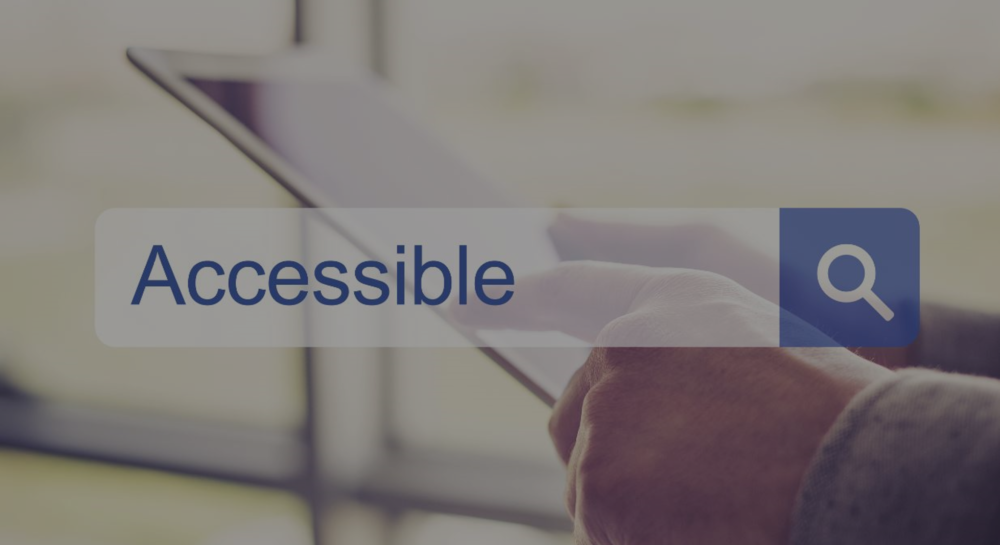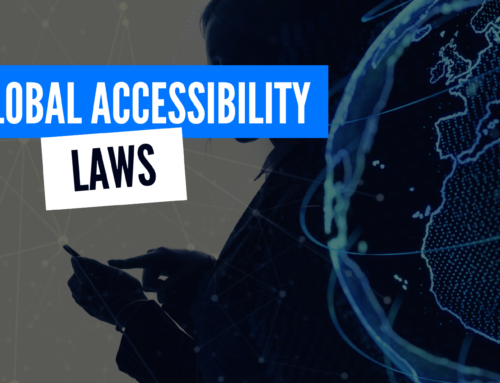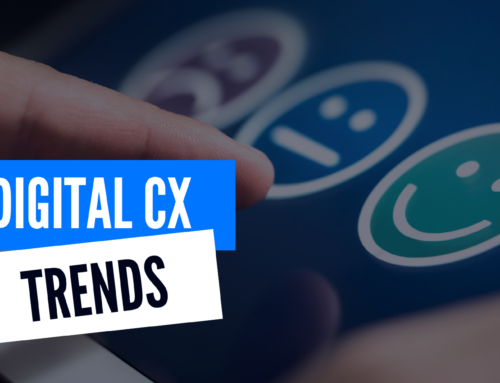Website and mobile app accessibility has all too often been an afterthought in the development process. But new drivers are emerging that should send accessibility to the top of the corporate agenda.
A new compliance benchmark
The regulatory landscape on accessibility is changing radically. For public sector organisations, including academic institutions, any website or mobile app needs to meet new legal requirements. Website and apps must conform to the Web Content Accessibility Guidelines (WCAG 2.1) – an internationally recognised set of recommendations for improving web accessibility.
These requirements build on existing obligations to people with a disability, introduced with the 2010 Equality Act.
Why should WCAG 2.1 be on the radar for organisations in the private sector?
There are now standards against which ‘accessibility’ can be measured if there is a complaint that a website or app disadvantages users with a disability. These requirements have been in place in the US and Canada for some time, and the numbers of legal cases being filed there are rising significantly year on year. Where North America goes, Europe will surely follow.
Since the law recognises ‘best endeavour’, it makes sense to adopt practices such as auditing for accessibility to show your commitment to continuous improvement in this area.
“Accessibility means more than putting things online. It means making your content and design clear and simple enough so that most people can use it without needing to adapt it, while supporting those who do need to adapt things.”
Guidance from www.gov.uk
The risk of Google de-ranking
Of particular concern to marketing departments, Google is preparing algorithms to penalise websites that under-perform on accessibility. It looks as if this initiative will be launched in 2021. This move could undermine your investment in digital marketing, relegating your website to a lower SERP.
Social media and your brand reputation
Lobby groups, charities and activists are ready to name and shame offending companies who lock out people with disabilities. It’s never been easier for the word to get around on social media. Customers and service users dissatisfied with their online experience can go public in an instance. Could your brand be vulnerable?
Of course, conversely this also creates the opportunity to gain a reputation for being inclusive.
Doing what’s right pays off commercially
The above are all external drivers that web and app developers, marketers and CEOs need to be aware of, but accessibility can offer an untapped commercial opportunity too if you treat it as more than a box-ticking exercise.
Firstly, by offering the best experience to people with disabilities, you expand your potential customer base. In the UK alone, nearly 2 million people are registered blind. If users find your site or app easy to use, you’ve just grown your potential user base. You can reinforce your reputation as an organisation that is easy to do business with, or as an employer who cares about employees’ well-being.
“Brands need to ensure their websites are accessible to disabled people or risk losing out on £249bn a year.”
‘Marketing Week’, October 2019
Accessibility affects everyone
It’s worth noting that the user/visitor does not have to be blind or otherwise severely disabled to find navigating a website or app a struggle. Many conditions, including cognitive impairments or learning disabilities, such as dyslexia or autism, and even epilepsy and depression in some instances, affect the user’s ability to cope with sensory overload. Meanwhile someone with even mild hearing difficulties may need subtitles for video and audio content.
We can go further and say that, in the current pandemic, making your website or app more accessible for all users and visitors is a no-brainer. Many of us are suffering from screen fatigue. After a day of back-to-back video meetings of variable technical quality, we want our down-time browsing to be a smooth, uncluttered experience.
What do you find irritating when you’re browsing? Pop-ups telling you how many people are viewing the item you’re looking at? Light-coloured text on a pale background? Muffled sound on video content? Keyword stuffing overkill? These are just some examples of how an overly busy website or app becomes so much noise for users in general.
Digivante can help you create a streamlined user experience. A Digivante accessibility review provides actionable feedback to help you define priorities for improving your website and app. Ideally, an early-stage review gives you a firm foundation for future web and app development, but it’s never too late to take action on accessibility.





